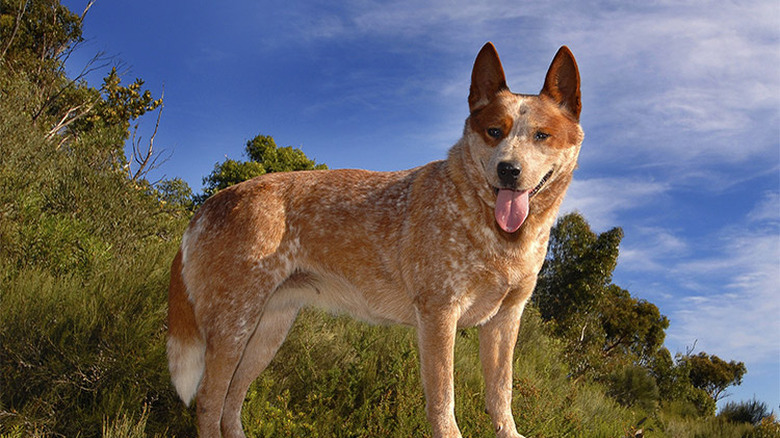How Big Do Red Heeler Dogs Get?
As their name suggests, red heelers are trained to nip at the heels of animals to drive them forward. They're a type of hearty herding dog, officially known as the Australian cattle dog, together with blue heelers and Queensland Heelers. These jovial canines are a medium-size breed and have a variety of coat colors. Their medium build and desire to please make them appealing pets, but they require plenty of stimulation to stave off boredom.
Red Heeler History
The Australian cattle dog is one of the most tenacious herding breeds in the world. Cattleman George Hall, widely considered to be the founder of the breed, began a cattle operation in the early 1800s. George and his son Thomas drove cattle thousands of kilometers to Sydney and needed a dog to help push cattle through dense underbrush. Local droving dogs, imported from England, were not hearty enough to withstand the harsh conditions of the Outback. The Halls crossed their dogs with native dingoes that Thomas had tamed, solving this problem. These dogs, known as "Hall's heelers," attracted a large following but were kept within the family until an estate auction following Thomas' death in 1870. Robert Kaleski, a dog expert from New South Wales, purchased a number of these dogs and eventually drew up a standard that would present them to the world as the Australian cattle dog.
Temperment
Red heelers, not unlike most working dogs, tend to be high energy and very intelligent. If they aren't busy chasing livestock, red heelers require a lot of stimulation and exercise. While they make great family dogs, they can be timid to new situations and require socialization from puppyhood. Red heelers are playful, but can get excitable and start nipping at the heels of children or other pets.
Size
Male red heelers should stand between 17 and 20 inches tall at the top of the withers. Average weight for these cheerful red dogs ranges between 35 and 45 pounds. Male red heelers tend to have a denser bone structure, and a properly built red heeler should be slightly longer than he is tall. He may or may not have a full tail. Female red heelers gravitate toward the smaller end of the height and weight scale. Females should retain the 10-to-9 length-to-height ratio, but should have smaller bone structure and slightly more refined features than males. Despite their smaller stature, female red heelers are just as determined and hard-working as male dogs.
Size as an Asset
The red heeler's size makes him a perfect droving dog. By definition, a drover pushes livestock forward and keeps a drove moving in the right direction. The red heeler's size also gives him an edge in competitions such as agility, allowing the dog to clear hurdles and sneak through tunnels that might be more difficult for taller dogs.
